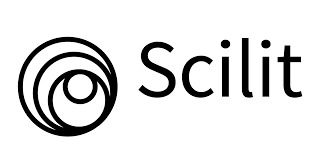STRATEGI ALTERNATIF ASPEK PEMASARAN PADA UMKM BATIK VIRDES
Abstract
Banyuwangi is well known as a region rich in cultural heritage, one of which is batik with its distinctive Gajah Oling motif that holds aesthetic, philosophical, and spiritual values. One of the small enterprises that contributes to preserving this cultural heritage is Batik Virdes, located in Tampo Village—a batik village that serves as a cultural tourism destination for both domestic and international visitors. This study aims to assess the feasibility of Batik Virdes from a marketing aspect, considering the vital role marketing plays in the sustainability and growth of UMKM. Based on the feasibility analysis, Batik Virdes holds strong competitive advantages in its unique and diverse batik motifs, along with high customer loyalty as shown by the 40–50% repeat purchase rate. Although 25% of customers reported dissatisfaction, this issue can still be resolved through product improvement. The analysis suggests that Batik Virdes should adopt a more progressive and bold marketing approach by leveraging its strengths and maximizing market opportunities. Recommended strategies include expanding promotional efforts through digital and traditional media, developing products aligned with current consumer trends, strengthening brand identity through the creation of an official slogan, and expanding distribution networks through strategic partnerships. The findings of this study are expected to provide valuable insights for Batik Virdes in developing effective marketing strategies, thereby increasing competitiveness and reinforcing its position in both local and national batik markets.
References
Arif, A. (2012). Dasar-Dasar Pemasaran Bank Syariah. Bandung: Alfabeta.
Hamzuri. (1981). Batik Klasik ‘Classical Ba-tik’. Jakarta: Penerbit Djambatan.
Koentjaningrat. (1985). Pengantar Ilmu An-tropologi. Jakarta: Aksara Baru.
Kotler, P. (1997) Marketing Management: Analysis, Planning, Implementation, and Control (9th ed.). Englewood Cliffs, NJ: Prentice Hall.
Kotler, P., & Armstrong, G. (2016). Princi-ples of Marketing (16th ed.). Pearson Edu-cation.
Kotler, P., & Armstrong, G. (2018). Princi-ples of Marketing (17th ed.). Pearson.
Kotler, P. & Keller, K.L. (2009) Marketing Management (13th ed.). Upper Saddle River, NJ: Pearson Prentice Hall.
Kotler, P., & Keller, K. L. (2018). Marketing Management (15th ed.). Pearson Educa-tion.
Lupiyoadi, R. (2006). Manajemen Pemasa-ran Jasa. Jakarta: Salemba Empat.
Muljadi, A. J. (2009). Kepariwisataan dan Perjalanan. Jakarta: Raja Grafindo Per-sada.
Rangkuti, F. (2019). Analisis SWOT: Teknik Membedah Kasus Bisnis. Jakarta: PT Gramedia Pustaka Utama.
Ula, C.I.N., Hermawan, H., & Gunawan, A. (2025). Pengaruh Digital Marketing ter-hadap Penjualan Produk UMKM Cahya Batik Pekalongan. AL-IQTISHAD: Jurnal Ekonomi, 17(1).
Tjiptono, F. (1997). Strategi Pemasaran. Yogyakarta: Andi Offset.
Copyright (c) 2025 Akbar Maulana

This work is licensed under a Creative Commons Attribution-NonCommercial 4.0 International License.
The author whose manuscript is published agrees to the following conditions:
- Publication rights of all journal manuscripts published / published on the JKTP website are held by the editorial board with the author's knowledge (copyright remains the author's).
- The formal legal provisions for access to digital electronic journal articles are subject to the provisions of the CC Attribution-Non-Commercial 4.0 license, which means JKTP has the right to store, transfer media / formats, manage in the form of a database, maintain, and publish articles without asking permission from the author as long as the author's name remains as the copyright owner.
- Manuscripts published / published in print and electronically are open access for the purpose of education, research and libraries. Apart from these purposes, the editorial board is not responsible for violations of copyright law.



.png)










